Unit 4 Public transport Reading(1)课件(22张)
文档属性
| 名称 | Unit 4 Public transport Reading(1)课件(22张) | 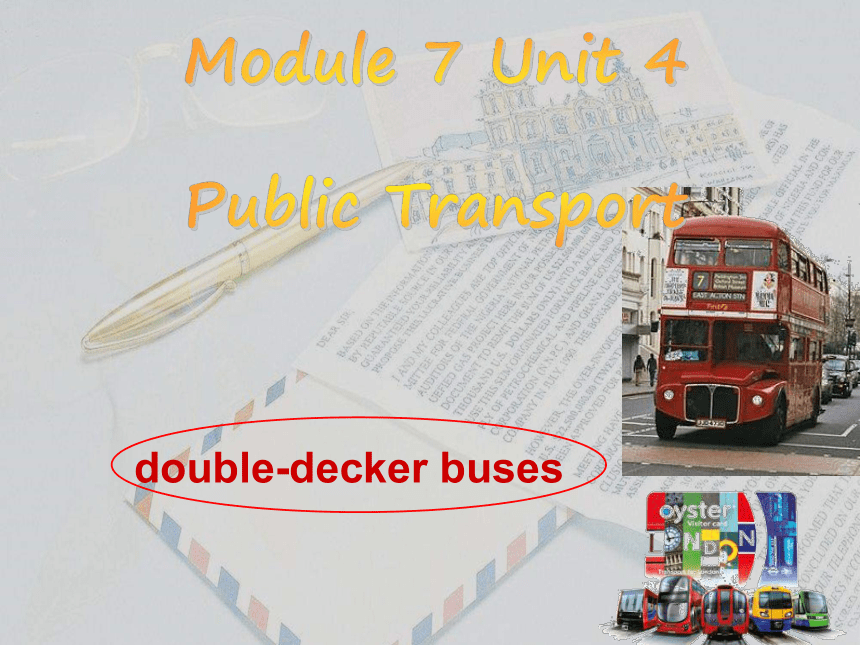 | |
| 格式 | zip | ||
| 文件大小 | 4.7MB | ||
| 资源类型 | 教案 | ||
| 版本资源 | 牛津译林版 | ||
| 科目 | 英语 | ||
| 更新时间 | 2019-07-31 22:23:26 | ||
图片预览

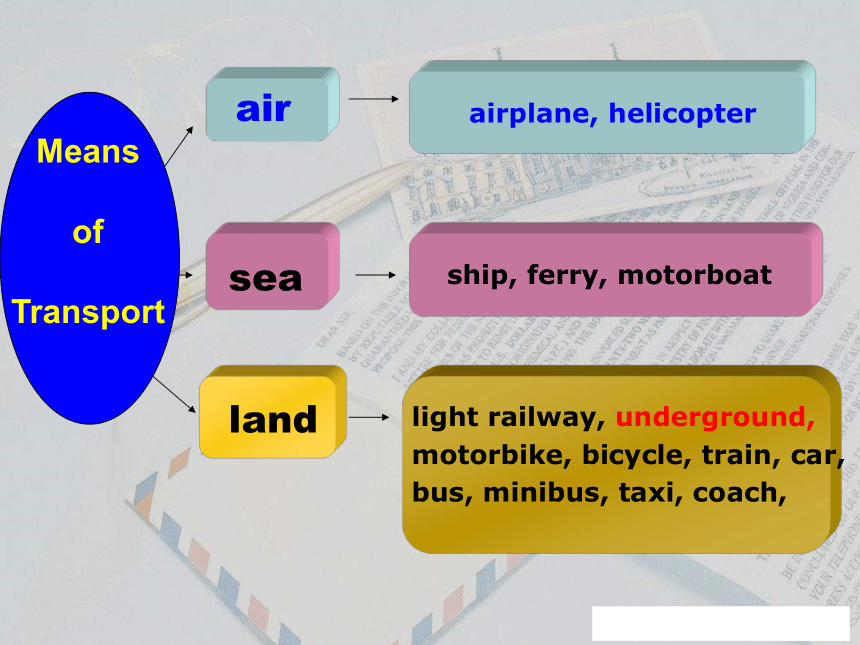
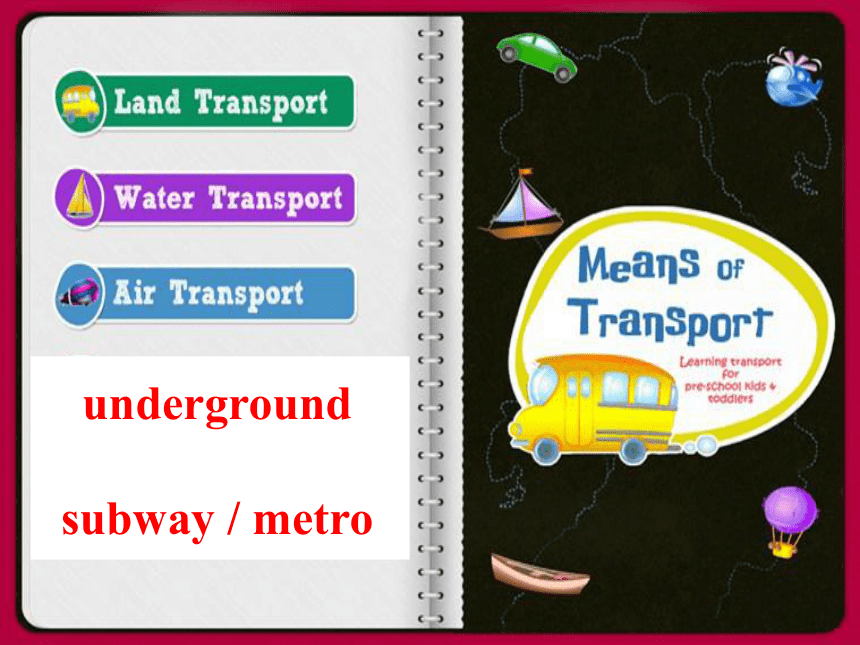
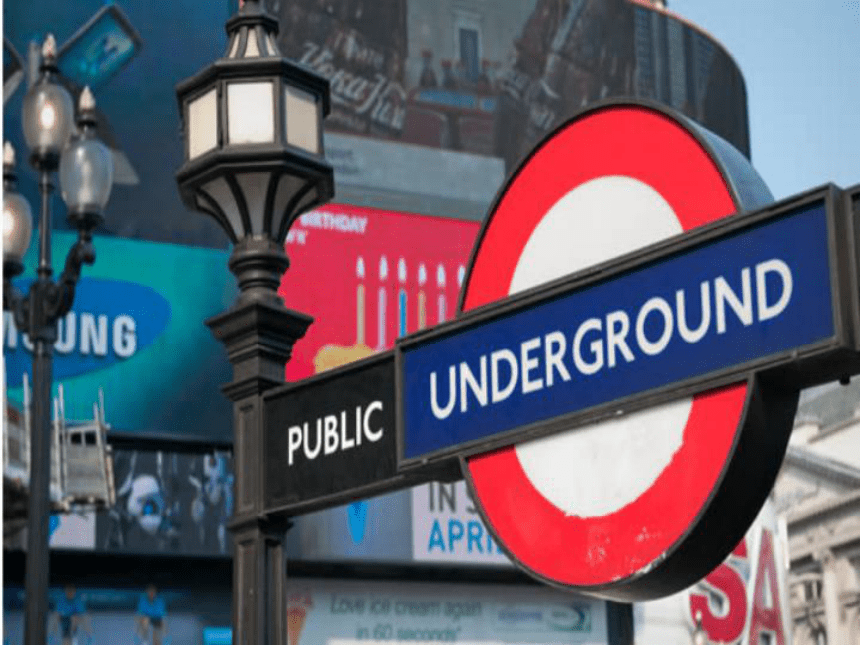
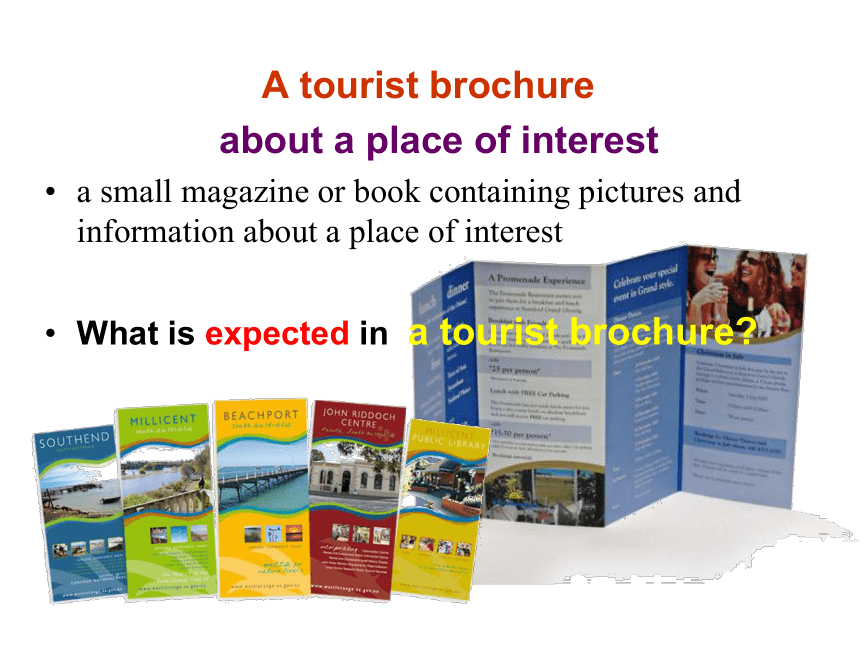
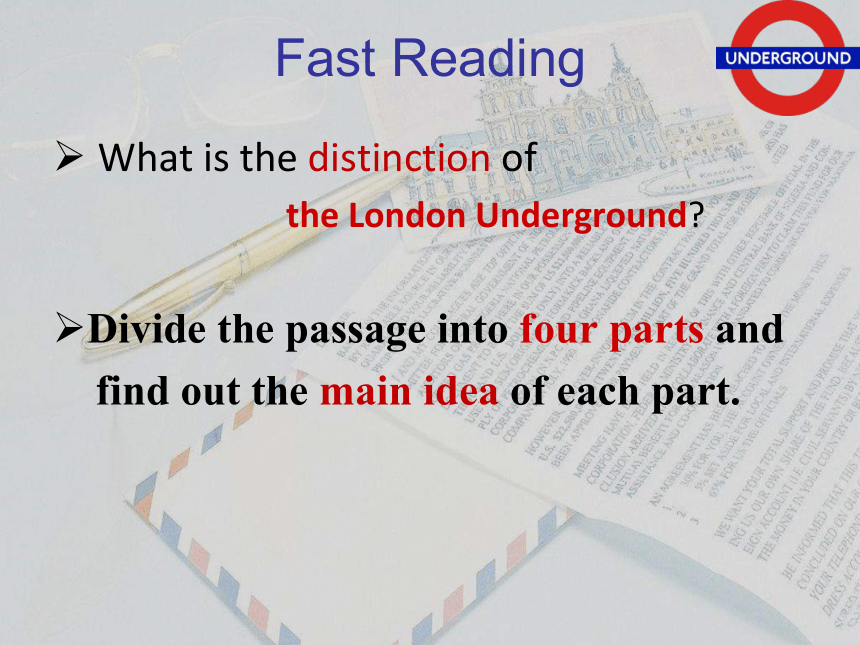
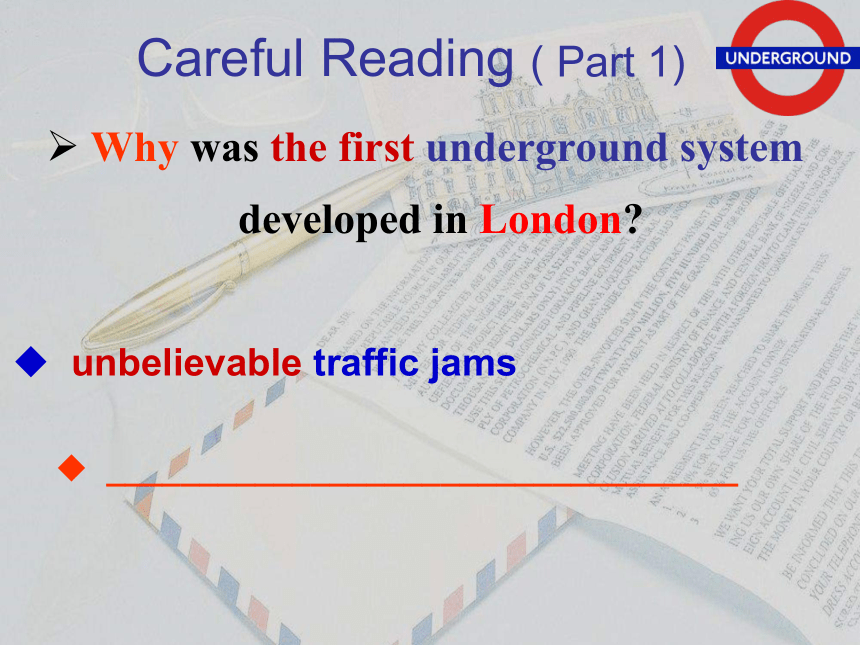

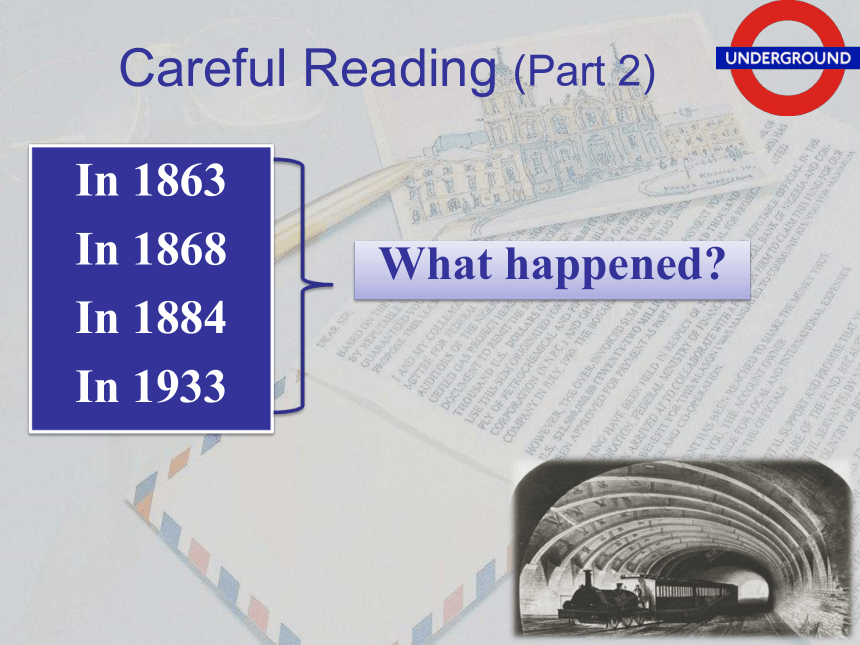
文档简介
课件22张PPT。double-decker busesModule 7 Unit 4
Public Transportairsealandairplane, helicopter ship, ferry, motorboat light railway, underground, motorbike, bicycle, train, car, bus, minibus, taxi, coach, Means
of
Transportunderground
subway / metro
A tourist brochure
about a place of interest
a small magazine or book containing pictures and information about a place of interest
What is expected in a tourist brochure? Fast Reading What is the distinction of
the London Underground?
Divide the passage into four parts and
find out the main idea of each part.
Careful Reading ( Part 1) Why was the first underground system developed in London?
unbelievable traffic jams
__________________________________
Careful Reading ( Part 1) Why was the first underground system developed in London?
…most trains to London only went to the outer
city limits, because building railway tracks into
the city would have damaged many old buildings. (L5)
Careful Reading (Part 2)In 1863
In 1868
In 1884
In 1933What happened?What happened in these years?In 1863 _________________ were opened.
In 1868 _________________ was opened in the south of London.
In 1884 underground service _______________ of the city was provided and the first railway tunnel under the River Thames ___________.
In 1933 _________________________ was created. the initial tunnelsthe next sectionin the middle was dugthe London Transport BoardCareful Reading (Part 2)In 1863
In 1868
In 1884
In 1933Travelling experienceTravelling ExperienceIn 1863, passengers were transported in carriages without windows...through the narrow tunnels...(Line 17)
In 1884, because of the smoke from the steam engines, early underground lines……so that people could get fresh air and would not choke(Line 23).
Travelling on these lines was not convenient, though, as each line was possessed by a different company, and many were very far from each other.(Line 31)chokingbad smellcrowdedair pollutiontime-wastinghard to find………………crowdedchokingbad smellinconvenienttime-wastinghard to find……uncomfortableair pollution……Who changed the situation?Travelling ExperienceHaving seen the situation,
a wealthy American businessman, Charles Yerkes,
undertook improving the system in 1902
by obtaining ownership of the many different lines
and setting up the Underground Electric Railways
Company of London.Unusual Uses during World War ⅡCareful Reading (Part 3) bomb shelters
an airplane factory
a directing center
meeting rooms
for the administration
of government What happened to the London Underground
after World War Ⅱ?
What made the system more user-friendly?
What is the present situation of the system?
Careful Reading (Part 4) Why not take a trip
on the oldest underground system today?
Visit our ticket office and buy one of the travel cards that permit you to travel all over the underground system. Buy a?Visitor Oyster card, Oyster card, Travelcard?or use a?contactless payment card?
to get the best value
as cash is the most expensive way to pay. Tips :Invented in 1933 by Harry Beck, the London Underground map is a 20th-century design classic.
It's very useful, clearly indicating the general directions and with all interchanges clearly shown. Transport for London produces free maps to help you get around. distinction,
traffic jams,
digging tunnels,
the River Thames,
Dub a short video.inconvenient, uncomfortable,
independent lines,
set up, authority
unusual uses,
Word War II
enlarge, add, transport
buy travel cards,
pick up a mapReflectionHow should we develop our transport system?
Cultural preservation
“Why then the world's mine oyster, which I with sword will open.”
---- William Shakespeare
The Merry Wives of Windsor The world is my oyster.ReflectionHow should we develop our transport system?
Cultural preservation
The Special functions
of
Metro Line 3
in Nanjing Flyovers in Yancheng Better futureThe world is my oyster !
Public Transportairsealandairplane, helicopter ship, ferry, motorboat light railway, underground, motorbike, bicycle, train, car, bus, minibus, taxi, coach, Means
of
Transportunderground
subway / metro
A tourist brochure
about a place of interest
a small magazine or book containing pictures and information about a place of interest
What is expected in a tourist brochure? Fast Reading What is the distinction of
the London Underground?
Divide the passage into four parts and
find out the main idea of each part.
Careful Reading ( Part 1) Why was the first underground system developed in London?
unbelievable traffic jams
__________________________________
Careful Reading ( Part 1) Why was the first underground system developed in London?
…most trains to London only went to the outer
city limits, because building railway tracks into
the city would have damaged many old buildings. (L5)
Careful Reading (Part 2)In 1863
In 1868
In 1884
In 1933What happened?What happened in these years?In 1863 _________________ were opened.
In 1868 _________________ was opened in the south of London.
In 1884 underground service _______________ of the city was provided and the first railway tunnel under the River Thames ___________.
In 1933 _________________________ was created. the initial tunnelsthe next sectionin the middle was dugthe London Transport BoardCareful Reading (Part 2)In 1863
In 1868
In 1884
In 1933Travelling experienceTravelling ExperienceIn 1863, passengers were transported in carriages without windows...through the narrow tunnels...(Line 17)
In 1884, because of the smoke from the steam engines, early underground lines……so that people could get fresh air and would not choke(Line 23).
Travelling on these lines was not convenient, though, as each line was possessed by a different company, and many were very far from each other.(Line 31)chokingbad smellcrowdedair pollutiontime-wastinghard to find………………crowdedchokingbad smellinconvenienttime-wastinghard to find……uncomfortableair pollution……Who changed the situation?Travelling ExperienceHaving seen the situation,
a wealthy American businessman, Charles Yerkes,
undertook improving the system in 1902
by obtaining ownership of the many different lines
and setting up the Underground Electric Railways
Company of London.Unusual Uses during World War ⅡCareful Reading (Part 3) bomb shelters
an airplane factory
a directing center
meeting rooms
for the administration
of government What happened to the London Underground
after World War Ⅱ?
What made the system more user-friendly?
What is the present situation of the system?
Careful Reading (Part 4) Why not take a trip
on the oldest underground system today?
Visit our ticket office and buy one of the travel cards that permit you to travel all over the underground system. Buy a?Visitor Oyster card, Oyster card, Travelcard?or use a?contactless payment card?
to get the best value
as cash is the most expensive way to pay. Tips :Invented in 1933 by Harry Beck, the London Underground map is a 20th-century design classic.
It's very useful, clearly indicating the general directions and with all interchanges clearly shown. Transport for London produces free maps to help you get around. distinction,
traffic jams,
digging tunnels,
the River Thames,
Dub a short video.inconvenient, uncomfortable,
independent lines,
set up, authority
unusual uses,
Word War II
enlarge, add, transport
buy travel cards,
pick up a mapReflectionHow should we develop our transport system?
Cultural preservation
“Why then the world's mine oyster, which I with sword will open.”
---- William Shakespeare
The Merry Wives of Windsor The world is my oyster.ReflectionHow should we develop our transport system?
Cultural preservation
The Special functions
of
Metro Line 3
in Nanjing Flyovers in Yancheng Better futureThe world is my oyster !
